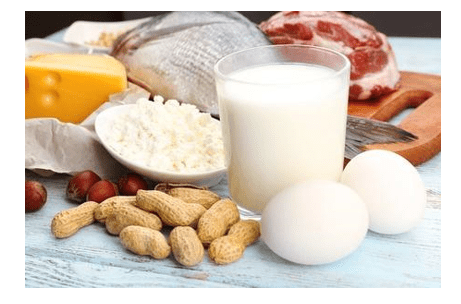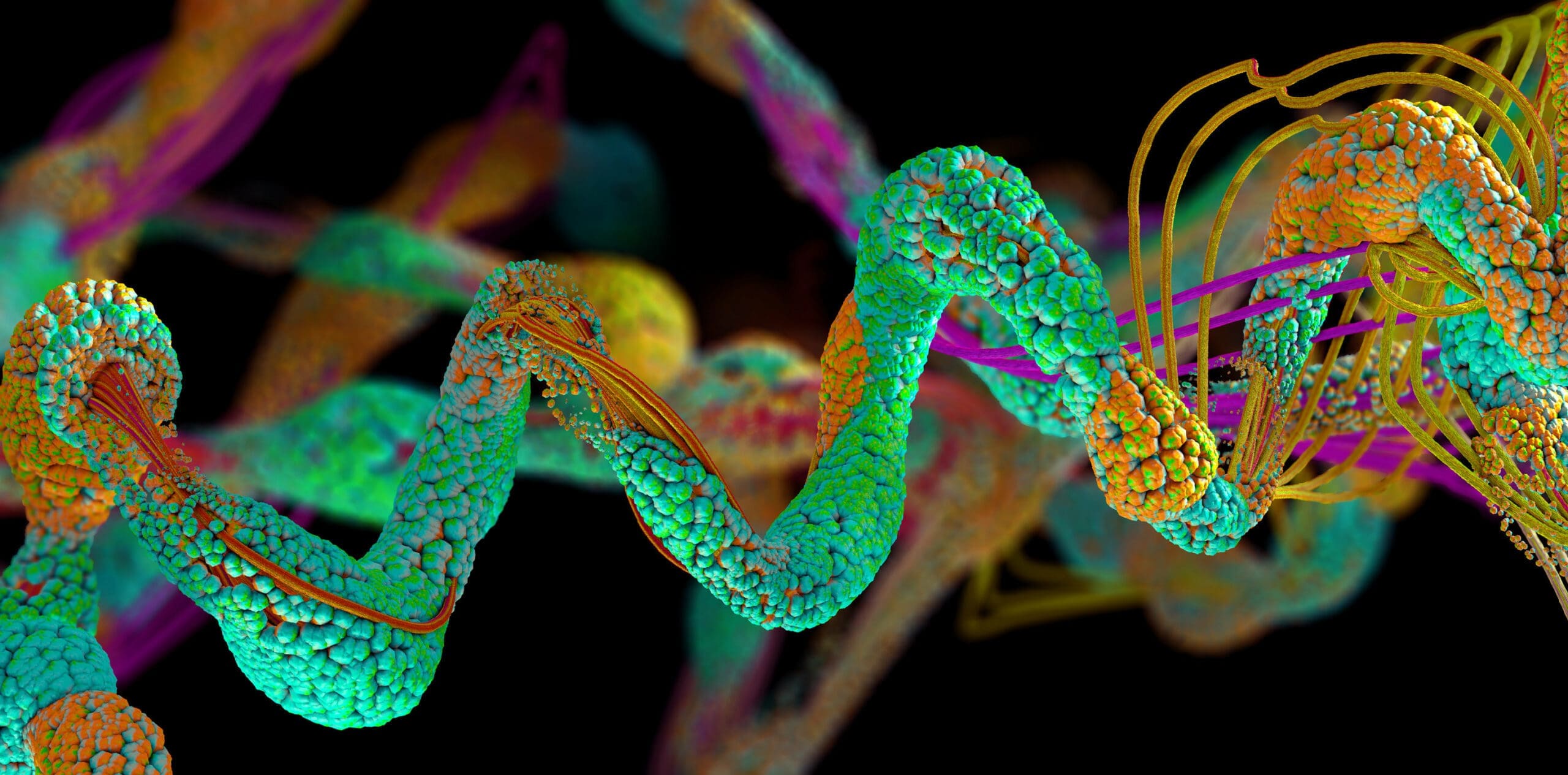Proteins are an essential component of living organisms. All cells contain protein; because of this, protein is the second largest fraction of the human body (18%) after water. Proteins are essential in the growth and repair of animal tissues and can be obtained from certain foods. Some of these types of foods are cheese, eggs, fish, meat, milk and nuts.

Like carbohydrates, proteins are large molecules made from smaller basic units. A range of amino acids make up a single protein molecule; therefore, proteins are polymers. Amino acids consist of the chemical elements nitrogen as well as carbon, hydrogen, and oxygen.
Overall, there are 20 different sub-units of amino acids that link together in long chains to make proteins. These chains consist of amino acids that are twisted into spirals with cross links holding all the chains together (see the following diagram for an illustration of the structure of a protein molecule).
The human body is able to make ten of the amino acids that it needs; however, the other ten amino acids must be included as part of our diet. These amino acids are known as essential amino acids and can be found in high amounts in dairy products, eggs, fish and meat.

A protein molecule contains 20 different amino acids. These amino acids can be arranged in any order within the protein. The shape of a protein molecule is determined by how these amino acids are organised. The shape of each protein molecule is vital in allowing them to carry out their functions. Because amino acids can be arranged in any order, there are thousands of different types of proteins in an organism; a few examples of the different proteins in our bodies are:
- Enzymes
- Keratin
- Elastin
- Collagen
- Haemoglobin
- Casein
It is recommended by doctors that the average human should intake a maximum of 70g of protein daily. In poorer countries, protein-deficiency disease (known as kwashiorkor) – and many other diseases caused by nutrient deficiencies – is more common than in more economically developed countries.



